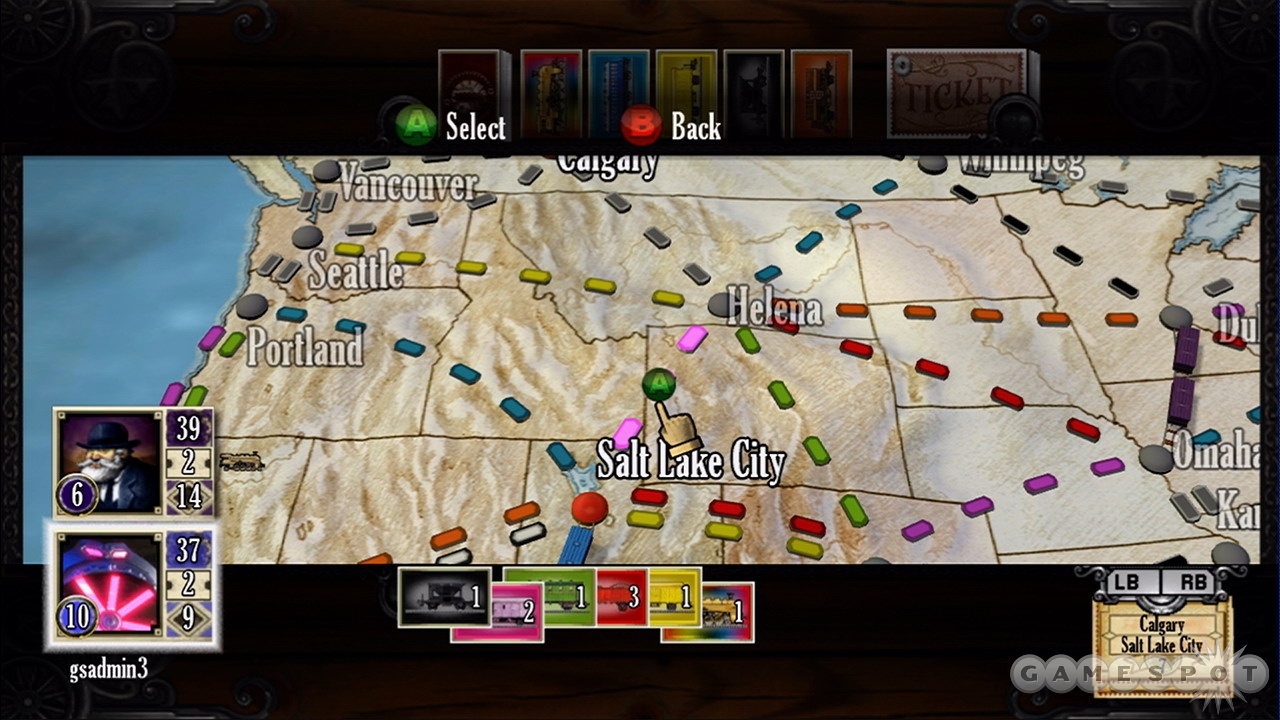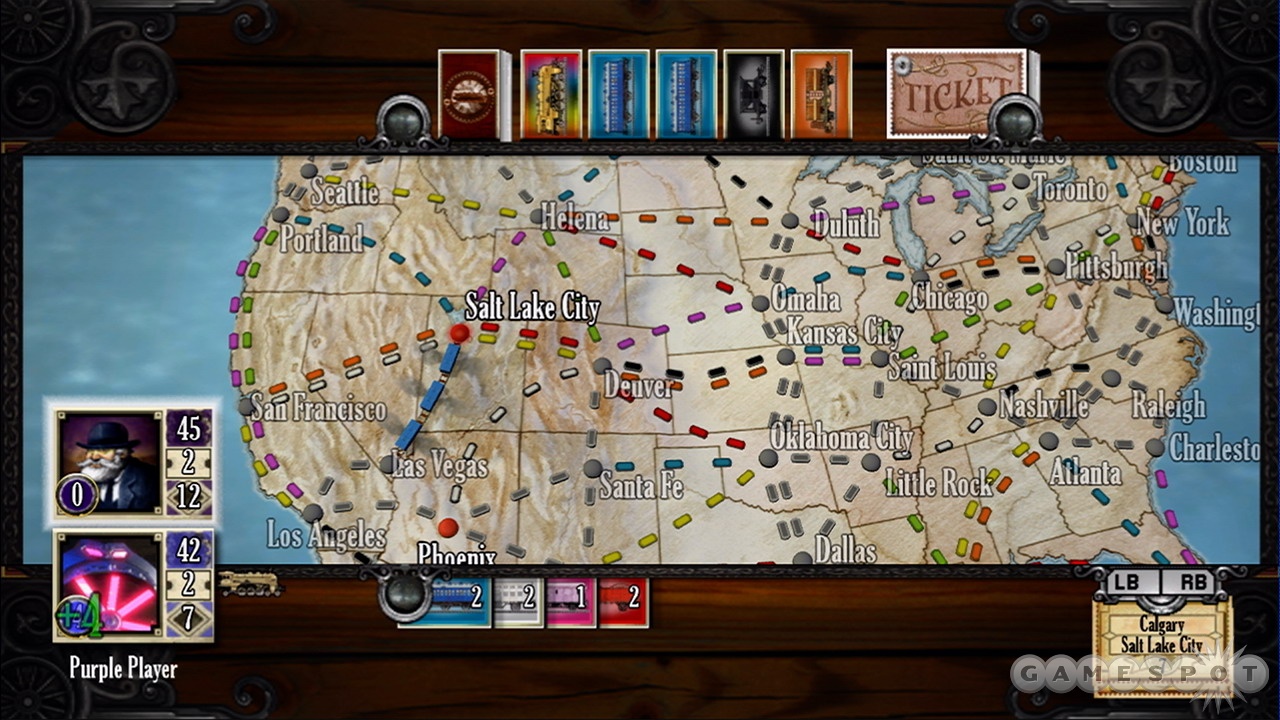Real board games are so last millennium. Now, all the cool kids get their games online, without any of those pesky game pieces to lose and bulky boxes to take up space in the closet. Just like Carcasonne, Catan, and Uno before it, Ticket to Ride dumps the cardboard in favor of a game pad, and the end result is just as good--if not better--than the original. Ticket to Ride is a smoothly paced strategy game that's easy to learn and fun to play.
While it can initially look daunting, Ticket to Ride is easier to pick up than the 16 pages of instructions imply; a quick play-through of the helpful tutorial should be all you need to get you up to speed. Your basic aim is to have the most trains and reach the most destinations by the end of the game. However, accomplishing that goal takes careful planning and a little bit of luck.

At the start of the game, you're dealt three destination cards, of which you must keep at least two. These random cards have two cities on them for you to connect as well as the point value that will be added or subtracted to your final score at the end of the game depending on whether or not you connected them. The distance between the cities on your destination card determines the point value, so a route for Los Angeles to New York will be worth more than a route from Santa Fe to Chicago. If you do manage to complete both of your destination cards during the game, you can choose to draw more or keep playing without a set destination. Tracks are organized by color and can only be acquired by obtaining the appropriate number of corresponding colored cards. Gray tracks and wild cards add a layer of depth and strategy; the former can be claimed by any color card and the latter can be substituted for the color of your choice.
Just like a real board game, nothing changes when you take it out of the box. The tracks are always the same colors and distance, plus there are a set number of cities. There are a lot of ways to strategize and keep the game fresh, but the lone map does get old after a while.
Offline, you can play against three friends or AI opponents. The AI opponents put up a decent fight, but it's always more fun to play against real people--there's just more satisfaction in claiming a track and blocking someone from his or her destination when you can hear the protests of the person you're blocking. Online, you can play with others or bots in ranked and unranked matches. There are no gameplay differences between the online and offline games other than the fact that ranked matches have timed turns to ensure the game moves at a brisk pace.

Like most board games turned video games, Ticket to Ride doesn't offer much visually. The low-frills visuals have an Old West flair that fits right in with the theme. The game board looks about as clean and organized as it can, considering that it's littered with brightly colored tracks. The map, trains, and tracks look sharp and crisp, but the color cards and AI avatars look grainy. Even with the uneven visuals, the game still manages to nail a playful new-frontier tone with the dark wood and rivet-filled metal that lines the screen and menus.
The sounds are what you'd expect from a game about trains; plenty of whistles, steam-powered chugs, and track-clanking racket. Some pleasing saloon music creeps in and out throughout your game, along with some ambient train noises.
At 800 Microsoft points ($10), the video game version of Ticket to Ride is cheaper than the original board game, which helps make up for the fact that there is only one map on which to play. With gameplay that is easy enough for everyone to grasp but deep enough to allow for some well-planned strategy, it's definitely worth climbing aboard Ticket to Ride.